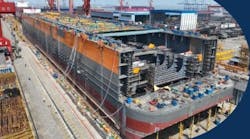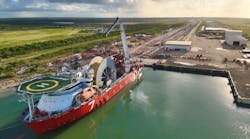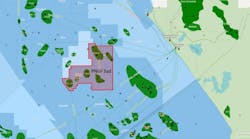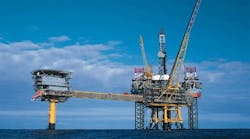Offshore staff
NORWALK, Connecticut -- The worldwide upstream investment of 224 oil and gas companies decreased 23% to $378 billion in 2009, according to the 2010 Global Upstream Performance Review, released by oil and gas research firm IHS Herold. Although development spending fell nearly 20%, the first decline in a decade, total hydrocarbon reserves increased 3% as both oil and gas reserves grew for the first time since 2005. Production also increased 1%, driven by a 2.2% increase in natural gas output, the company says.
Oil reserves reversed a two-year decline, rising 3% to 164 Bbbl. The main driver was 8.6 Bbbl in positive reserve additions, but extensions and discoveries in the Canadian oil sands, and South and Central America also added a record 7.9 Bbbl. Natural gas reserves climbed 3.7% despite a record 11.4 tcf in negative reserve revisions, as development of unconventional plays in North America and liquefied natural gas (LNG) resources in Asia accelerated.
The decline in capital spending was led by a 40% reduction by exploration and production (E&P) companies, while the integrated oil companies cut investment by just 9%. Exploration spending was most resilient, dropping just 12% to $62.7 billion. In contrast, unproved acquisition costs were down 71%, and a 2% dip in proved acquisition outlays would have fallen 50% were it not for the $20 billion Suncor/Petro-Canada merger, the report says.
Lower capex and higher reserves resulted in a near 50% decrease in reserve replacement costs -- to $11.41/boe -- and lowered finding and development costs to $12.23/boe. Strong natural gas reserve additions led reserve replacement rates to the highest levels in five years.
Despite this, upstream profits plunged 47%. A 13% decline in pre-tax expenses did not offset a 30% reduction in revenues. The integrated oil companies accounted for 85% of the profit with the E&P companies accounting for the balance. Reserve write-downs slashed net income for the large E&P companies and drove the mid-sized and small E&P companies to a loss. However, the industry generated free cash flow due to the steep decline in capital investment.
Key regional findings of the 2010 IHS Herold Global Upstream Performance Review include:
- Oil and gas reserves in Europe continued to decline as companies redirect cash flows to other regions. The reserve replacement rate reached a five-year high through improving reserve additions, but the region was still below full reserve replacement figures.
- Capex in Africa and the Middle East was down 14%, much less than the worldwide average. This drop is due to regional dominance by the integrated oil companies, which tend to spend thorough the commodity cycles.
- Asia/Pacific reserves gained 3% as natural gas extensions and discoveries surged. Reserve replacement rates in the region were well above full replacement levels.
- Capex in South and Central America increased since regional players have strong development portfolios to exploit. Total reserves in the region increased 3%, the first gain in several years.
- An uptick in proved acquisition spending limited total capex decline to 17% in the Russia/Caspian region, while drill-bit spending outlays fell 22% Production in the region increased 18%, with strong results from both oil and gas output.
10/04/2010




